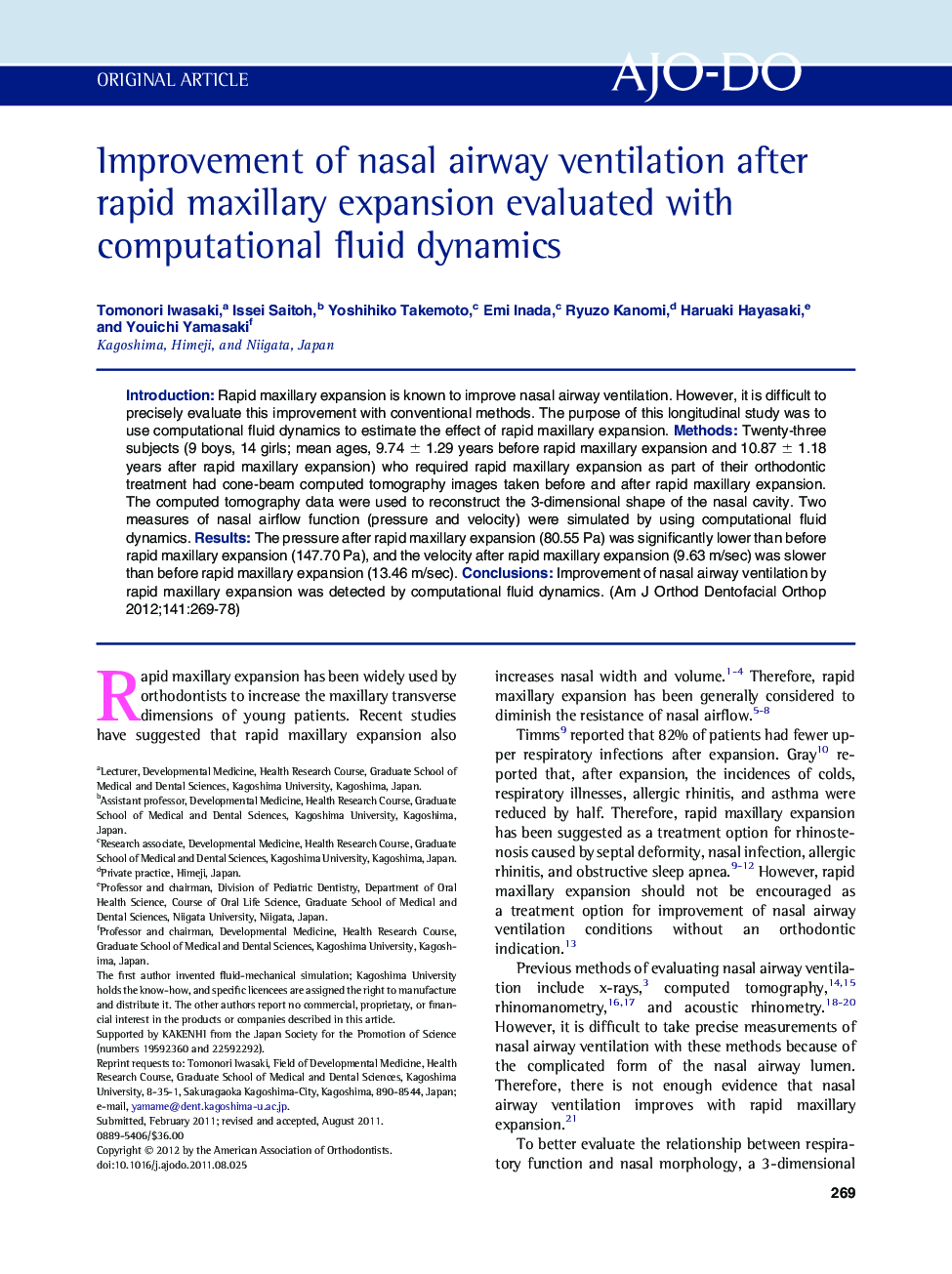| Article ID | Journal | Published Year | Pages | File Type |
|---|---|---|---|---|
| 3117875 | American Journal of Orthodontics and Dentofacial Orthopedics | 2012 | 10 Pages |
IntroductionRapid maxillary expansion is known to improve nasal airway ventilation. However, it is difficult to precisely evaluate this improvement with conventional methods. The purpose of this longitudinal study was to use computational fluid dynamics to estimate the effect of rapid maxillary expansion.MethodsTwenty-three subjects (9 boys, 14 girls; mean ages, 9.74 ± 1.29 years before rapid maxillary expansion and 10.87 ± 1.18 years after rapid maxillary expansion) who required rapid maxillary expansion as part of their orthodontic treatment had cone-beam computed tomography images taken before and after rapid maxillary expansion. The computed tomography data were used to reconstruct the 3-dimensional shape of the nasal cavity. Two measures of nasal airflow function (pressure and velocity) were simulated by using computational fluid dynamics.ResultsThe pressure after rapid maxillary expansion (80.55 Pa) was significantly lower than before rapid maxillary expansion (147.70 Pa), and the velocity after rapid maxillary expansion (9.63 m/sec) was slower than before rapid maxillary expansion (13.46 m/sec).ConclusionsImprovement of nasal airway ventilation by rapid maxillary expansion was detected by computational fluid dynamics.
